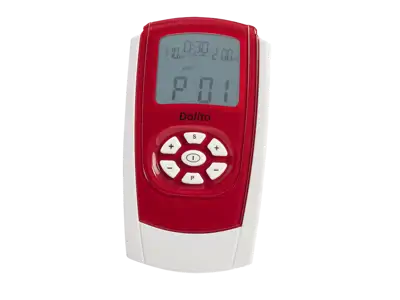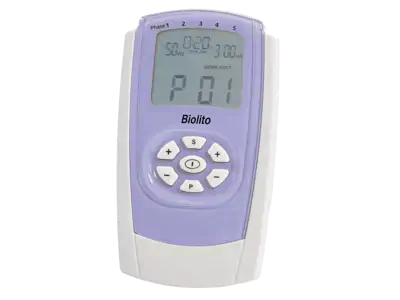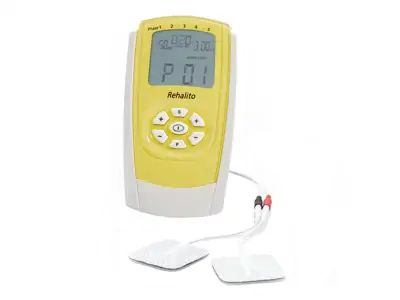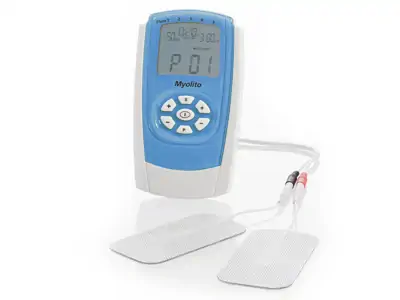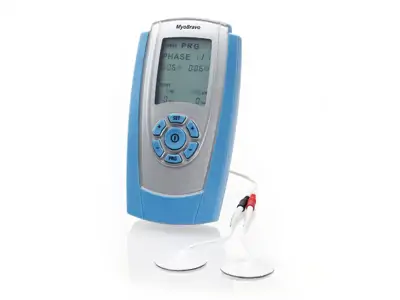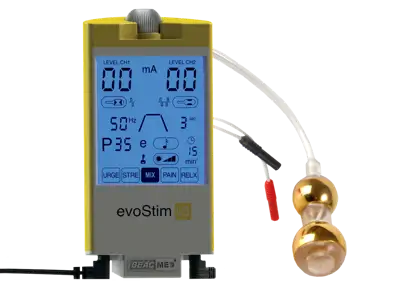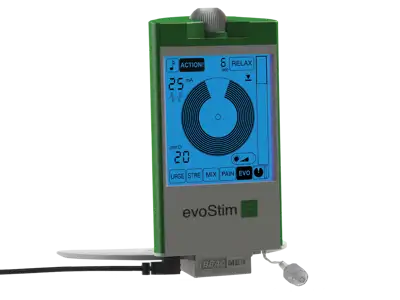Electrotherapy
Electrotherapy is an umbrella term. It includes all treatments that use electric current. The best known are TENS, EMS, MENS, iontophoresis or interferential current. Although they all use electrical impulses, they all work in different ways and have different effects. Just as a spoon, knife or fork is for a different purpose, each is a different cutlery. There are simpler and cheaper devices that provide only one form of current, i.e. one type of treatment. For example, TENS only, muscle stimulation (EMS) only, iontophoresis only.
Most electrotherapy devices are now multifunctional. They provide multiple types of electrotherapy treatments. The more types of treatments a device has, usually the more expensive it is, but it also provides treatment for more problems.
The more expensive device is not necessarily the better one for you, because it may have many treatment programs that you don't need in your particular case. The expensive devices have treatment modalities that a physical therapist who treats multiple patients can take advantage of. For example, you may only need a Genesy 600 or 1500 with a denervated muscle treatment program if you want to treat peripheral muscle paralysis.
If you just want to relieve pain or strengthen your muscles, it's unnecessary to buy the most powerful device, because that's not what makes the difference!
Before you buy a device, check which types of treatments and functions you need and decide based on that!
Types of electrotherapy
TENS (nerve stimulation)
A method of pain relief, the pulses of the treatment "suppress the pain stimulus", thus eliminating the pain for a while. This type of treatment has no (or minimal) curative effect, it does not act on the muscles, it "only" reduces the pain for a while. The advantage over drugs is that you are not intoxicated and there are no side effects.
The pain-relieving effect of TENS is felt from the start of the treatment and lasts for a few hours.
EMS (muscle stimulation)
A method of treating muscles (the exception is the so-called peripheral paralysis muscle, because it requires selective stimulation current treatment, see below).
EMS works depending on the settings of the treatment program. Other stimulation is needed to relax muscles, improve muscle strength, speed up post-operative recovery (muscle strength regain). It increases blood circulation by up to 300% by contracting muscles, so it improves circulation and also stimulates healing. Indirectly relieves musculoskeletal pain - even more powerful than TENS for muscular pain.
It is excellent for all conditions where muscle strength, mass, support and function need to be restored. This includes incontinence, muscular atrophy, herniated discs, lumbar sprains, sciatica, varicose veins, vascular stenosis, muscle pain, neck, back, waist, knee and other muscle pain. Helps relieve muscle stiffness in cases of central pain, Parkinson's disease, ALS, multiple sclerosis, etc. It speeds up movement recovery after paralysis caused by stroke.
Muscle strengthening takes time. If you could get stronger from a single stimulation, athletes would just use this: tonight I'm going to stimulate one because tomorrow is the Olympics...It's not that simple. Muscles are strengthened by regular contractions. So muscle stimulation should be used 1x or 2x a day. Improvement is noticeable after 2-3 weeks and should be maintained for at least 2-3 months. There are conditions (paralysis) where it may need to be used for years.
Selective stimulation (denervated muscle stimulation)
A method of treating damaged muscles called denervated muscles, which are muscles that have lost nerve. Such a condition is known as peripheral paralysis, which can be caused by injury to the nerve fibre during an accident or surgery, but also by herniated discs, spinal fractures, spinal stenosis, etc. Facial nerve paralysis, although it usually occurs after a cold, can cause such a condition. The denervated muscle does not respond to normal EMS! Therefore, a specially adjusted pulse is needed. In addition, the recovery time for nerve injury is very slow, even in a lucky case it is definitely several months, but more likely several years! If the muscle is not treated with electrotherapy during this time, it will be destroyed. Even if the nerve regenerates, it will no longer find a functioning muscle. This is why you need to use the stimulator continuously (up to 2-3 times a day) in the case of peripheral paralysis.
Stimulating denervated muscles takes a very long time. The first positive signs are usually only noticeable after a few months, and in most cases you may need to use it for more than a year.
You only need a selective stimulation device if you want to treat denervated muscles, i.e. muscles that have lost their nerve and suffer from peripheral paralysis.
Microcurrent (MENS)
Microcurrent is more effective in relieving pain than TENS. On the other hand, it has a healing, regeneration-stimulating effect. It can be used for all inflammations, muscle and ligament injuries. It is excellent for the treatment of arthritis, arthrosis, carpal tunnel syndrome, tennis elbow, golf elbow, frozen shoulder, rotator cuff inflammation, neck-back-waist pain, lumbago, sciatica, sciatica, sciatic nerve inflammation, piriformis syndrome, hip pain, knee pain, Achilles tendon and plantar fascia (fascia plantaris) inflammation, spur pain.
It stimulates the healing process of inflammation, meaning its effects develop slowly, over a period of weeks. But these conditions tend to cause complaints that last for years, so a few weeks of persistent microcurrent treatment is decidedly short in duration compared to the persistence of the disease.
Microcurrent stimulates the body's self-healing processes, so minimal results can be expected from a single treatment. A minimum of 40-50 treatments is required. A minimum of 1 treatment per day should be performed, with the whole regimen restarted if several days are missed.
Iontophoresis
Iontophoresis treatment uses direct current and a flow of charges to deliver the active ingredient to the treatment site (avoiding the digestive tract). This gets the drug where it needs to be immediately and avoids the usual "wastage" of a pill (the oral drug is digested, absorbed in the intestines, enters the bloodstream and only a fraction of it reaches where it should, say your injured ankle).
Iontophoresis takes advantage of the fact that electrical charges move between the positive and negative poles. During the treatment, the current will pass between electrodes placed on either side of your joint, passing through the joint and "carrying" the medication inside the joint.
The treatment is done in a course of treatments. A minimum of 10 treatments is needed before an effect is seen.
Kotz (Russian) and Interferential
These are important forms of current for physiotherapists, not home users. For home use (generally), you don't need a device that has them.
